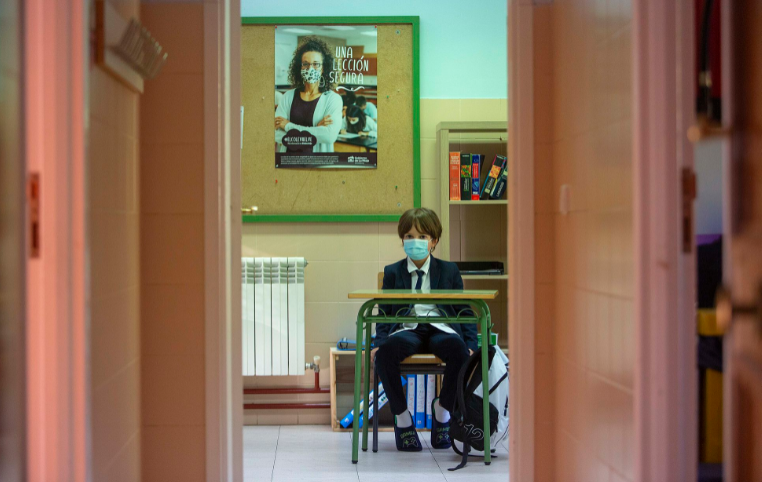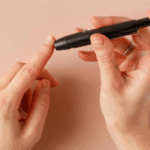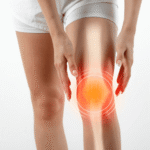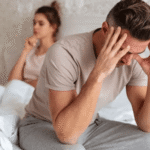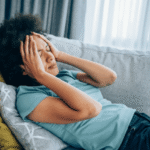On December 15, the immunization campaign for children under 12 years of age begins, which in recent weeks have become the group in which the coronavirus spreads the most
Children have become the population group in which the coronavirus spreads the most and that translates into an increase in cases in schools. It is a moderate increase, with global figures in Spain that point to a still low impact (around 0.38% of the classrooms in quarantine, when a year ago they reached 1.5%) and, in addition, the experts ensure that the vaccination approved for boys and girls from 5 to 11 years old that begins on December 15it will significantly improve the outlook. However, the global figures surely do little to console the thousands of families who see their lives upset every week by the closures of classrooms imposed in schools (the week of November 29 to December 3 there were more than 50,000 students in quarantine), many times due to outbreaks that have the school itself as the center of propagation, according to the epidemiologist Quique Bassat. The following is a review of the security measures that are still in force this year to fight the pandemic, the procedures stipulated in case of contagion, and the possibilities that families have to face quarantines.
What are bubble groups?
The general protocol has maintained for this course the so-called “stable coexistence groups” or “bubble groups” in infant and primary school to avoid contact with other students, although in 5th and 6th grade (10-11 years) you can also choose the solution of the minimum distance established for the elderly (ESO, Baccalaureate, and FP). It is a minimum separation between tables of 1.5 meters, with the possibility of making it more flexible to 1.2 (flexibility that most communities will apply). If the health situation worsens much (with alert levels 3 and 4), the distance of 1.5 meters would be the minimum for students of 3rd and 4th year of ESO and Baccalaureate (14 to 17 years old) and, even, the possibility of resuming blindness. Bubble groups can be larger than last year:
Do vaccinated students have to quarantine if there is a positive in their bubble group?
The answer is no, with nuances. Both the general norm and the Action Guide in the event of covid-19 cases in educational centers establish that the narrow contracts of a positive do not have to quarantine if they are vaccinated. The rule is already working this course for high school students, a stage in which the vast majority of students are immunized, as well as for teachers of all levels who have received the serum, and will also be extended to the kids of the Kindergarten and primary schools that are between 5 and 11 years old once they have completed the vaccination schedule. Students who are naturally immunized for having been infected with covid are also exempt from quarantine, although in this case, the rule establishes that they will only be freed from confinement for six months after passing the disease.
The protocols do, however, establish exceptions. Immunosuppressed students should always quarantine. And they must also comply with it, even if they are vaccinated, close contacts (in a bubble group all members of the class are considered as such) of a positive caused by the omicron, beta or gamma variants (or that public health, which has the last word in the concrete application of all the regulations, consider that there is a suspicion that it is this variant). Sources from the Ministry of Health added that the action guidelines are regularly reviewed (the latest version of the specific school document is from September 7, and the general rule, called the Early Detection, Surveillance and Control Strategy for Covid-19, was updated December 1).
The guide of the Ministry of Health (which the autonomies have adapted to their territories) foresees that students who are close contacts but who are exempted from quarantine because they are vaccinated are subjected to two coronavirus detection tests. One, when the positive is known in the group and another, “around seven days after the last contact with the confirmed case.” The protocol recommends that they avoid contact with vulnerable people, that they do not attend mass events, use a surgical mask in their social relationships, limit their contacts “to those groups with whom they habitually interact within the school”, and that they be attentive to the “Possible appearance of compatible symptoms” with the disease.
Who are close contacts?
Apart from living relatives, all the members of a bubble group. Also, in the rest of the classes, all the people that the center considers to have had risky contact with the positive case, that is, having shared space within two meters without a mask or having used it incorrectly (because they were not well adjusted or leaving the nose free, for example). For confirmed COVID patients, they do not need to have a diagnostic test before returning to class. For close contacts, it is recommended, but not mandatory either.
How should the quarantine be done?
If a suspected case is confirmed as positive, the person should not come to the center and should remain in isolation until three days after the end of the clinical picture and a minimum of 10 days from the onset of symptoms. Your close, unvaccinated contacts will also need to be quarantined for 10 days from the last contact they had with the covid patient.
What if there is an outbreak in a school?
From three positive cases related to each other in the same center, it is considered an outbreak. From that moment, the body designated for this in each community will assess, depending on the severity of the case, the measures to be taken, which range from increasing prevention and hygiene standards and isolating cases, to closing classes, entire courses and, even, of the whole school or institute, although the latter is a very infrequent measure. On November 26, for example, only three of the 29,058 recorded by the Ministry of Education were closed.
Is the use of the mask still mandatory?
The mask continues to be mandatory in general in schools from the age of six, according to the protocol agreed for this year between the Government and the autonomous communities, although it can be removed in some cases, such as to consume food and beverages, and being outdoors and respecting the minimum separation. Its use in a physical education class and at recess varies depending on the territories. For example, in the Valencian Community, it is not compulsory during gym class, but it is during recess. In Catalonia, where it is not necessary to use it during breaks in the playground if students only interact with classmates, they considered the general elimination during recess, but they ended up discarding it. In the Community of Madrid, where this possibility has been approved, it has been most of the centers that have ended up rejecting it
How are covid cases managed?
Neither students nor teachers should go to class if they have symptoms of covid, that is, fever, cough, feeling short of breath, fatigue, or diarrhea. The issue of body temperature from which one should not attend the center aroused some controversy last year since not all communities have set the threshold at the same point: for example, Euskadi set 37 degrees, while in Madrid and Extremadura were 37.2. In any case, if the center detects any of the symptoms in a student at the entrance or throughout the day, they are taken to a separate space until their parents or guardians come to pick them up to take them home. There, they will have to remain isolated until they have the results of the diagnostic tests. Teachers with symptoms should act the same.
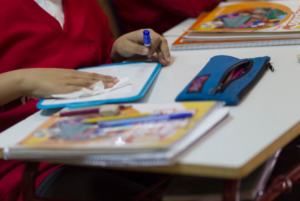
Do I have the right to leave work to care for my quarantined child?
Due to the fact of having a child in quarantine, no, explains the professor of Labor Law and Social Security at the Complutense University of Madrid Jesús Lahera. There is an increasingly narrow path that has been used for months, by which parents of children who have tested positive for covid access a sick leave due to temporary disability: that they are forced to quarantine because they are in close contact with the minor. However, the generalization among the adult population of the vaccine (with the complete regimen, the parents of positive don’t need to isolate themselves) has practically closed this option. If the minor’s illness is complicated and his condition requires hospitalization, the labor legislation already provided for the parents’ right to leave. In cases of preventive quarantines, that is,
Is there any special measure to reconcile these cases?
The Government has extended the Mecuida plan until February 2022, which allows workers who have to take care of a quarantined child to request the adaptation of the working day (change of shift, flexible hours, telework, change of functions) or reduce it, until 100%, with the consequent reduction in salary. Although it is established in the norm as a right, its exercise is not automatic, the company can refuse, since “it must be justified and reasonable and proportionate in light of the situation of the company.” What does it mean? What if the company refuses, the only solution is to go to court, which must be resolved, of course, urgently. And what is happening in practice? As explained almost a year ago on her website by Emilia de Sousa, from Sousa Abogados, “For the reduction companies are not putting many obstacles, but it is a luxury item, a privilege, that a working-class country eminently cannot afford” due to the loss of salary. And, in the case of adaptations, if the company refuses, you have to sue.
Are there alternatives to the Mecuida plan?
The care of children due to mild illness is a problem that affects families long before the arrival of the covid. Jesús Lahera recalls that many agreements already contemplate for these cases specific leaves (paid or not) or days for their affairs. Once again, the fact of applying it for quarantines without illness of the minor will depend on the flexibility and discretion of the company. Some companies also contemplate the possibility of requesting short leaves of absence for the 10 days that the quarantine is extended.

